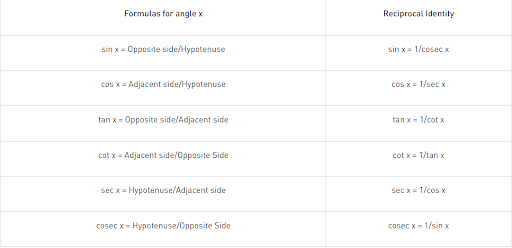The number of solutions of |cos x| = sinx, such that –4π ≤ x ≤ 4π is :
The number of solutions of |cos x| = sinx, such that –4π ≤ x ≤ 4π is :
- 4
- 6
- 8
- 12
The Correct Option is C
Solution and Explanation
Number of solutions of the equation |cosx| = sinx for x ∈ [-4π, 4π] will be equal to 4 times the number of solutions of the same equation for x∈[0, 2π].
Graphs of y = |cosx| and y = sinx are as shown below.
Hence, two solutions of a given equation in [0, 2π]
⇒ Total of 8 solutions in [–4π, 4π].
Top Questions on Trigonometric Equations
- Let $ A = \left\{ \theta \in [0, 2\pi] : \Re\left( \frac{2 \cos \theta + i \sin \theta}{\cos \theta - 3i \sin \theta} \right) = 0 \right\} $. Then $ \sum_{\theta \in A} \theta^2 $ is equal to:
- JEE Main - 2025
- Mathematics
- Trigonometric Equations
The number of solutions of the equation $ \cos 2\theta \cos \left( \frac{\theta}{2} \right) + \cos \left( \frac{5\theta}{2} \right) = 2 \cos^3 \left( \frac{5\theta}{2} \right) $ in the interval \(\left[ -\frac{\pi}{2}, \frac{\pi}{2} \right ]\) is:
- JEE Main - 2025
- Mathematics
- Trigonometric Equations
- If for $ \theta \in \left[ -\frac{\pi}{3}, 0 \right] $, the points $ (x, y) = \left( 3 \tan\left( \theta + \frac{\pi}{3} \right), 2 \tan\left( \theta + \frac{\pi}{6} \right) \right) $ lie on $ xy + \alpha x + \beta y + \gamma = 0 $, then $ \alpha^2 + \beta^2 + \gamma^2 $ is equal to:
- JEE Main - 2025
- Mathematics
- Trigonometric Equations
- Find the general solution of \( \tan^2 \theta = 1 \).
- Maharashtra Class XII - 2025
- Mathematics & Statistics
- Trigonometric Equations
- If $ \cos^{-1}(x) - \sin^{-1}(x) = \frac{\pi}{6} $, then find } $ x $.
- KEAM - 2025
- Mathematics
- Trigonometric Equations
Questions Asked in JEE Main exam
- A 400 g solid cube having an edge of length \(10\) cm floats in water. How much volume of the cube is outside the water? (Given: density of water = \(1000 { kg/m}^3\))
Given below are two statements: one is labelled as Assertion (A) and the other is labelled as Reason (R).
Assertion (A): The density of the copper ($^{64}Cu$) nucleus is greater than that of the carbon ($^{12}C$) nucleus.
Reason (R): The nucleus of mass number A has a radius proportional to $A^{1/3}$.
In the light of the above statements, choose the most appropriate answer from the options given below:- JEE Main - 2025
- Nuclear physics
- The roots of the quadratic equation \( 3x^2 - px + q = 0 \) are the 10th and 11th terms of an arithmetic progression with common difference \( \frac{3}{2} \). If the sum of the first 11 terms of this arithmetic progression is 88, then \( q - 2q \) is equal to:
- JEE Main - 2025
- Arithmetic Progression and Quadratic Equations
- The type of oxide formed by the element among Li, Na, Be, Mg, B and Al that has the least atomic radius is:
- JEE Main - 2025
- Periodicity of Elements
- The number of real solution(s) of the equation \( x^2 + 3x + 2 = \min \left( |x - 3|, |x + 2| \right) \) is:
- JEE Main - 2025
- Coordinate Geometry
Concepts Used:
Trigonometric Functions
The relationship between the sides and angles of a right-angle triangle is described by trigonometry functions, sometimes known as circular functions. These trigonometric functions derive the relationship between the angles and sides of a triangle. In trigonometry, there are three primary functions of sine (sin), cosine (cos), tangent (tan). The other three main functions can be derived from the primary functions as cotangent (cot), secant (sec), and cosecant (cosec).
Six Basic Trigonometric Functions:
- Sine Function: The ratio between the length of the opposite side of the triangle to the length of the hypotenuse of the triangle.
sin x = a/h
- Cosine Function: The ratio between the length of the adjacent side of the triangle to the length of the hypotenuse of the triangle.
cos x = b/h
- Tangent Function: The ratio between the length of the opposite side of the triangle to the adjacent side length.
tan x = a/b
Tan x can also be represented as sin x/cos x
- Secant Function: The reciprocal of the cosine function.
sec x = 1/cosx = h/b
- Cosecant Function: The reciprocal of the sine function.
cosec x = 1/sinx = h/a
- Cotangent Function: The reciprocal of the tangent function.
cot x = 1/tan x = b/a
Formulas of Trigonometric Functions:
